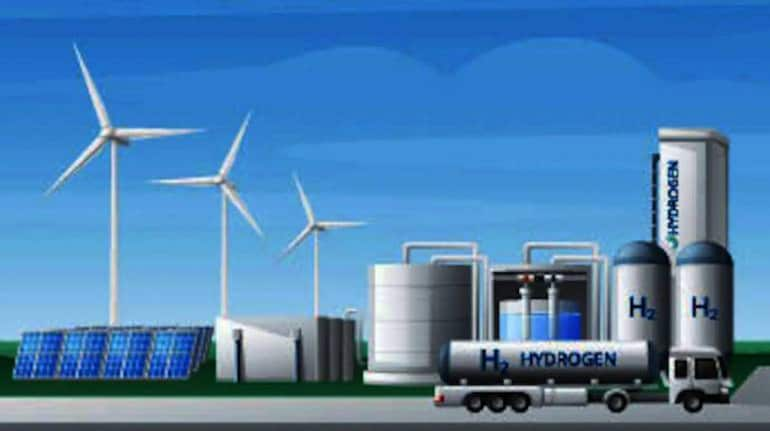



Taking the National Green Hydrogen Mission (NGHM) a step forward, the Indian government issued a draft roadmap for research and development (R&D) in the green hydrogen sector. The objective is to decrease the cost of carbon-free fuel and develop efficient and safe technologies for its production, storage, and transportation.
Currently, the manufacturing cost of green hydrogen in India is around Rs 300 per kg. Green hydrogen is produced using renewable energy instead of fossil fuels.
The Union Cabinet approved the NGHM on January 4 with an initial outlay of Rs 19,744 crore, including Rs 17,490 crore for incentives. The government aims to produce at least 5 million metric tonnes (MMT) of green hydrogen annually by 2030 under the NGHM, which would require 60-100 GW electrolyser capacity and 125 GW renewable energy capacity. This initiative is expected to reduce carbon dioxide emissions by 50 MMT per year.
The draft roadmap for R&D in green hydrogen is currently open for suggestions and objections from the public. Professor Ajay Kumar Sood, the principal scientific advisor to the government of India, highlighted the technology challenges identified in the draft report. These challenges include improving efficiency, cost-effectiveness, scalability, safety of green hydrogen technologies, and integration of storage, transport, and grid infrastructure.
The R&D framework under the NGHM proposes a Strategic Hydrogen Innovation Partnership (SHIP), which would be a Public-Private Partnership (PPP) framework with dedicated R&D funds and contributions from the industry and government.
The plan also involves building strategic international partnerships and conducting long-shot research in breakthrough areas. Encouraging innovative Micro, Small, and Medium Enterprises (MSMEs), startups, and Centers of Excellence are considered essential, along with broad-based solutions to address various research areas.
The draft roadmap categorizes R&D projects into mission mode projects (0-5 years impact horizon), grand challenge projects (0-8 years), and blue sky projects (0-15 years). These projects are classified across three verticals: hydrogen production, storage and transportation, and end-use applications.
Once public comments are obtained and the final R&D roadmap is adopted by the government, project proposals will be invited and awarded accordingly. Renowned institutions such as Bhabha Atomic Research Centre (BARC), Indian Space Research Organization (ISRO), Council of Scientific & Industrial Research (CSIR), Indian Institutes of Technology (IITs), Indian Institute of Science (IISc), and the Indian industry, including IOCL, will be involved in the R&D for green hydrogen.
Currently, hydrogen technologies along the value chain are in the developmental stage. Mature technologies like electrolysers, fuel cells, and carbon composite cylinders are not yet cost-competitive compared to alternatives.
Moreover, upcoming technologies promising lower costs still need to demonstrate long-term performance. The government's proposed R&D roadmap aims to design affordable, efficient, safe, and reliable pathways in this regard.
Discover the latest Business News, Sensex, and Nifty updates. Obtain Personal Finance insights, tax queries, and expert opinions on Moneycontrol or download the Moneycontrol App to stay updated!
Find the best of Al News in one place, specially curated for you every weekend.
Stay on top of the latest tech trends and biggest startup news.